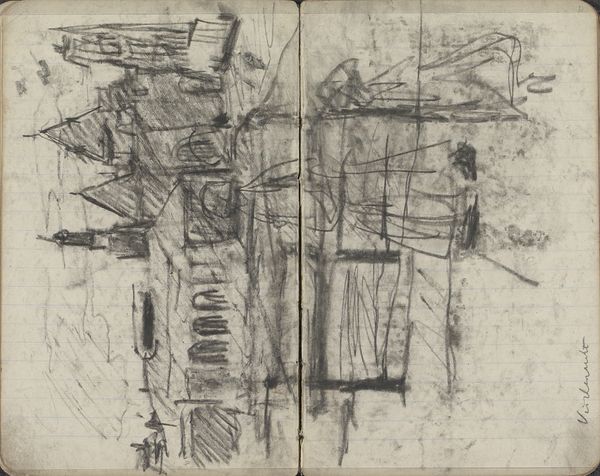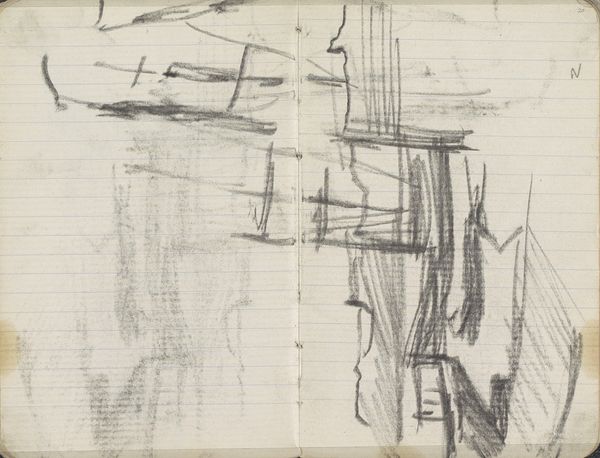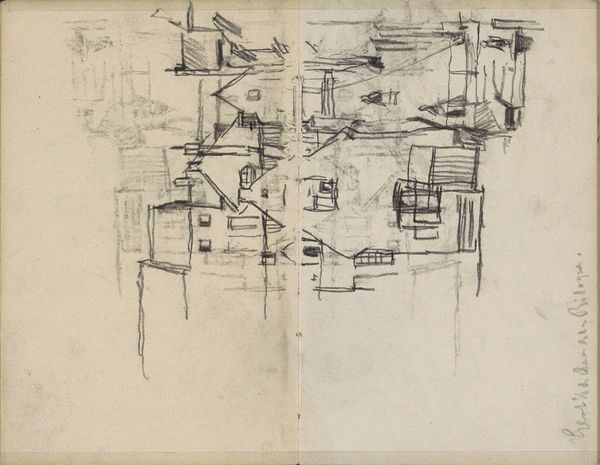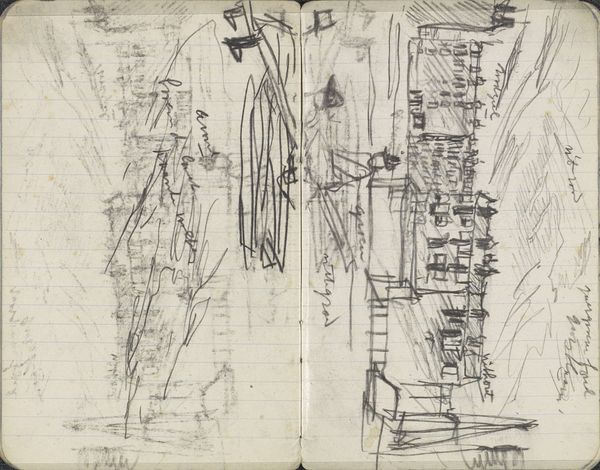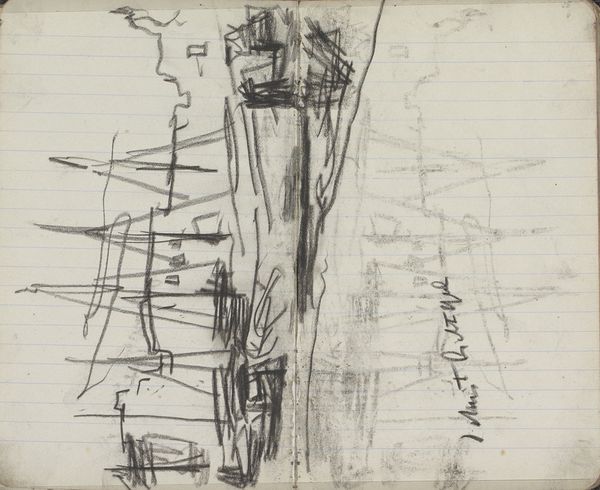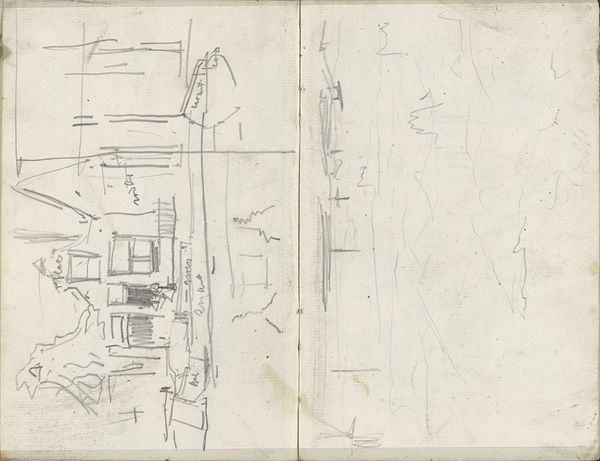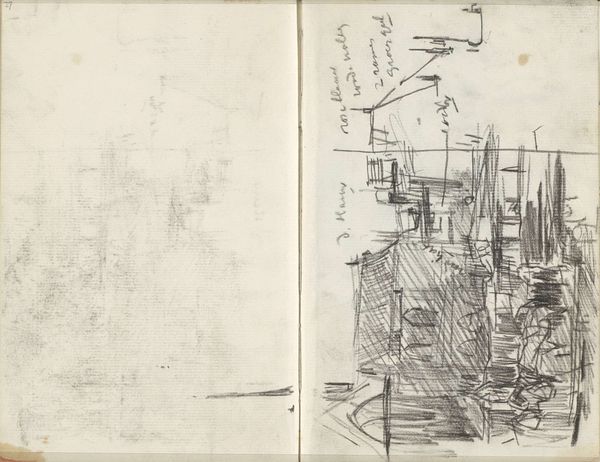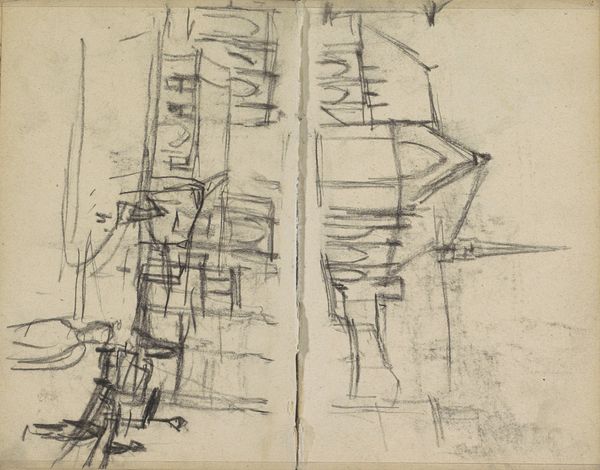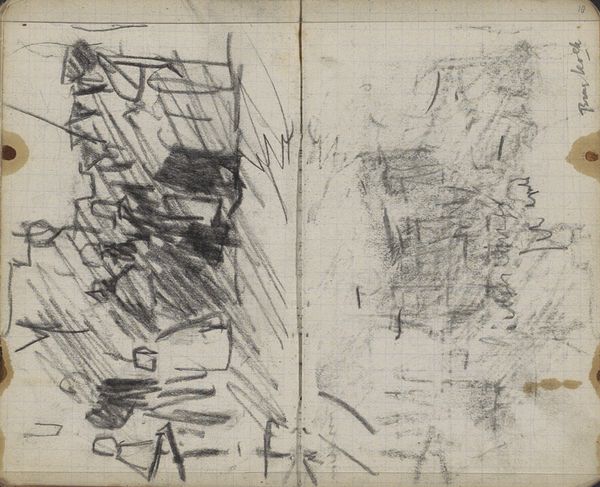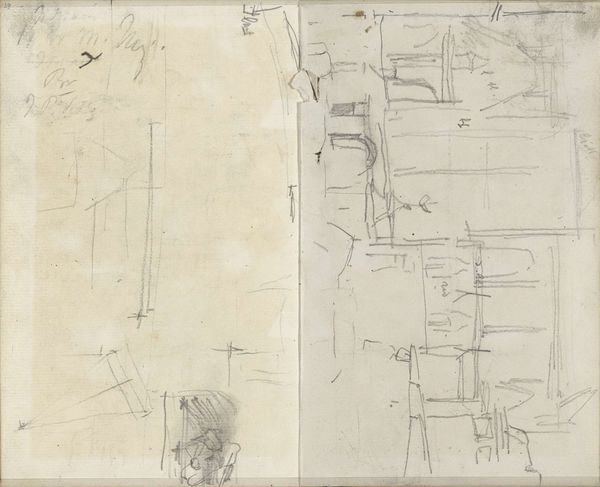
Copyright: Rijks Museum: Open Domain
Curator: Before us, we have "Gezicht op gebouwen in Amsterdam," a cityscape executed in pencil by George Hendrik Breitner, likely created between 1898 and 1902. Editor: Immediately striking is how the lines seem so tentative, so raw. It gives the impression of capturing a fleeting moment. I feel like I'm glimpsing Amsterdam through the artist's quickly jotted notes. Curator: It's important to understand that Breitner was deeply embedded in the Amsterdam social fabric. His images are always intertwined with his subjects in complex networks, not just documentation. Editor: Absolutely, the way he deploys this seemingly casual style perhaps reveals an intimacy with the urban environment and even hints to his feelings towards societal classes and the urban struggles in Amsterdam at the time. Were his subjects also those marginalized in society? Curator: Breitner actively embraced new technologies like photography and mass print, utilizing them extensively as a means to compose paintings like this. Editor: Considering photography as a reference shifts my perspective. It allows an expanded reflection of social structures, almost akin to a snapshot of Amsterdam society, of production and material circumstances. Curator: Furthermore, you can see this work on the pages of his sketchbook. To witness it in the actual material from its moment of creation shows that his paintings are inherently interwoven with observation, social commentary and his direct experience with material process and production. Editor: Right! It really prompts thoughts on the nature of urban space. The unfinished and rather fragile, faint sketch could symbolize themes of transience, precariousness, and also change inherent within the community? Curator: It does, but Breitner was particularly skilled at depicting everyday working life by depicting laborers who existed at the periphery of high art, like maids, tradesmen and horse handlers and so was directly participating in ongoing discourses about class. Editor: Thank you, seeing it from that angle is invaluable and it seems vital for discussions surrounding societal hierarchy to be re-introduced alongside this type of image. Curator: Precisely, it challenges conventional artistic categorization and places his social agenda at the forefront. Editor: Well, I leave with much food for thought, especially considering how artists negotiate documenting their environment with their own embedded feelings.
Comments
No comments
Be the first to comment and join the conversation on the ultimate creative platform.
